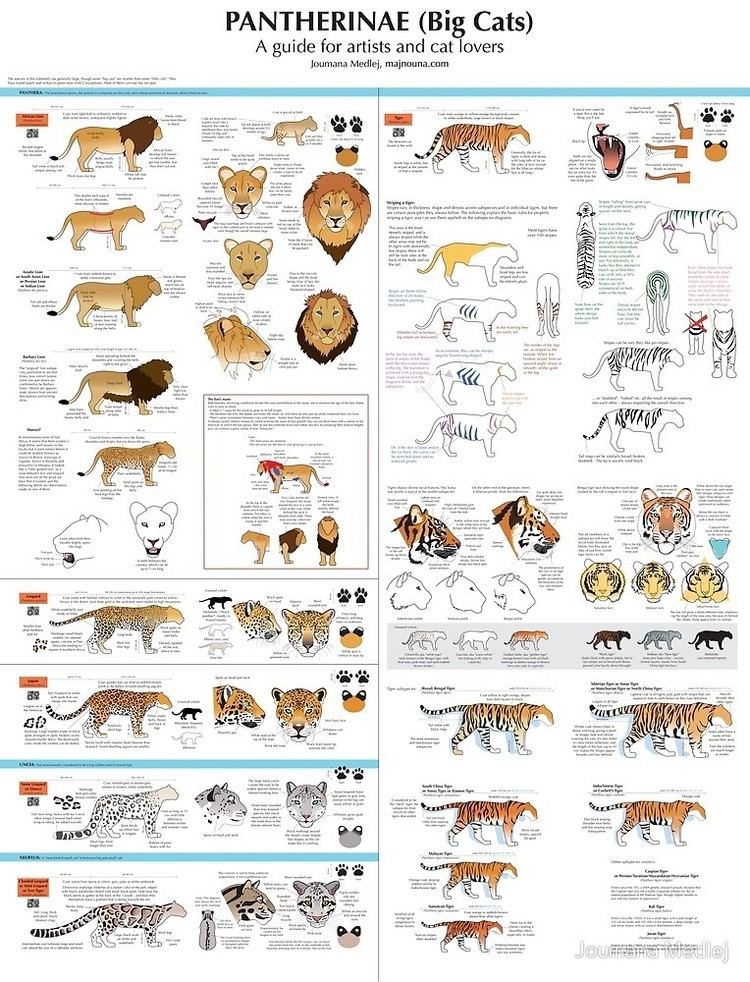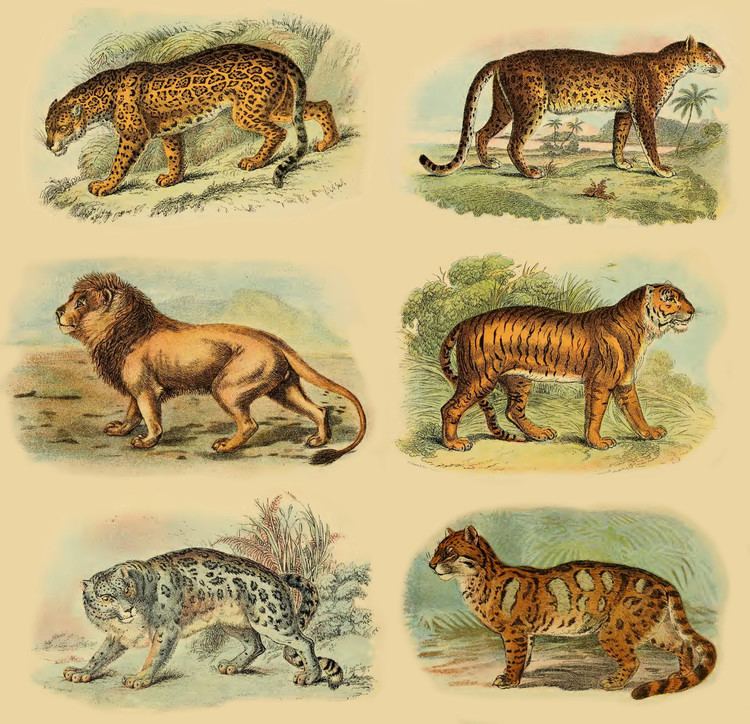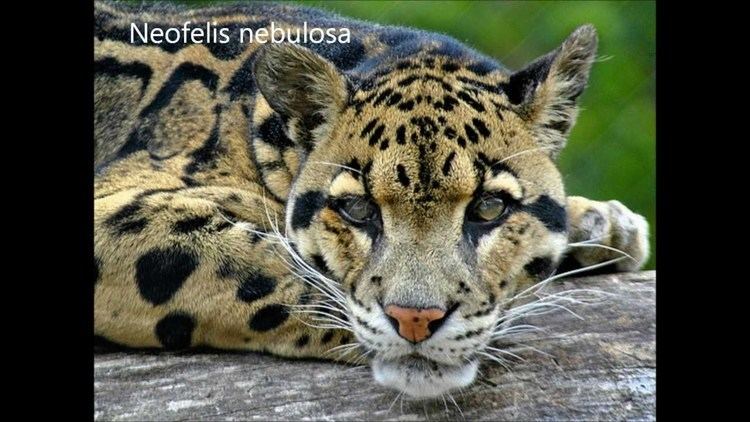Scientific name Pantherinae | Phylum Chordata | |
 | ||
Subfamily PantherinaePocock, 1917 Mass Tiger: 90 – 310 kg, Lion: 190 kg, Leopard: 31 kg, Jaguar: 56 – 96 kg, Snow leopard: 32 kg, Clouded leopard: 12 – 23 kg Height Tiger: 70 – 120 cm, Lion: 1.2 m, Leopard: 45 – 80 cm, Jaguar: 63 – 76 cm Gestation period Tiger: 93 – 112 days, Lion: 110 days Lower classifications Tiger, Lion, Leopard, Roaring cats, Jaguar | ||
Pantherinae
Pantherinae is a subfamily within the cat family Felidae named and first described by Reginald Innes Pocock in 1917.
Contents

Characteristics

In pantherine cats, the suspensorium of the hyoid is imperfectly ossified. Its inferior portion consists of an elastic tendon, which confers great mobility upon the larynx. Due to this tendon, pantherine cats can distend the back of the mouth greatly. The structure of the hyoid allows them to roar. The rhinarium is flat and, at most, only barely reaches the dorsal side of the nose. The area between the nostrils is narrow and not extended sidewards as in the Felinae.
Taxonomy
Pocock defined this subfamily as comprising the genera Panthera and Neofelis.
Pantherine species include:

Evolution
The divergence of Pantherinae from Felinae has been estimated to have occurred between six and ten million years ago. DNA analysis suggests that the snow leopard Uncia uncia is basal to the entire Pantherinae and should be renamed Panthera uncia. There is also evidence of distinct markers for the mitochondrial genome for Felidae.
Another DNA-based study has suggested that the branching order was Panthera tigris first, followed by P. onca, P. leo, and the last two sister species: P. pardus and P. uncia.
Felis pamiri, formerly referred to as Metailurus, is now considered a probable relative of extant big cats.
